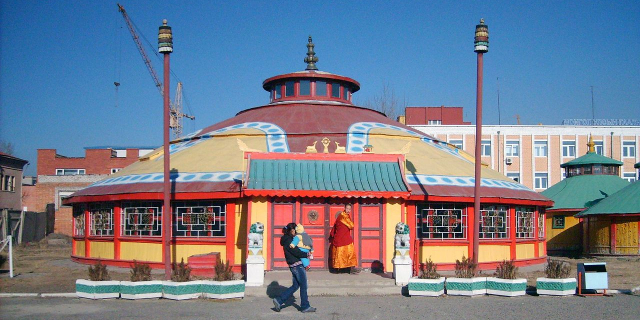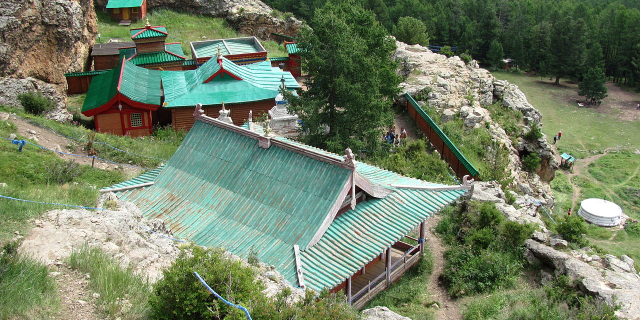The Trans-Mongolian Railway (Mongolian: Транс-Монголын төмөр зам, Trans-Mongolyn tömör zam) links Ulan-Ude on the Trans-Siberian Railway in Buryatia, Russia, with Jining in Inner Mongolia, China, via Ulaanbaatar, the capital of Mongolia. It was completed in 1956 and runs from northwest to southeast, with major stations at Naushki/Sükhbaatar on the Russian border, Darkhan, Ulaanbaatar, Choir, Sainshand, and Zamyn-Üüd/Erenhot on the Chinese border (where the railway changes from single-track to double-track, and the gauge changes from 1,520 mm (4 ft 11+27⁄32 in) Russian gauge to 1,435 mm (4 ft 8+1...Read more
The Trans-Mongolian Railway (Mongolian: Транс-Монголын төмөр зам, Trans-Mongolyn tömör zam) links Ulan-Ude on the Trans-Siberian Railway in Buryatia, Russia, with Jining in Inner Mongolia, China, via Ulaanbaatar, the capital of Mongolia. It was completed in 1956 and runs from northwest to southeast, with major stations at Naushki/Sükhbaatar on the Russian border, Darkhan, Ulaanbaatar, Choir, Sainshand, and Zamyn-Üüd/Erenhot on the Chinese border (where the railway changes from single-track to double-track, and the gauge changes from 1,520 mm (4 ft 11+27⁄32 in) Russian gauge to 1,435 mm (4 ft 8+1⁄2 in) standard gauge). There are important branch lines to Erdenet and Baganuur.
 Map of Mongolia's rail network
Map of Mongolia's rail network
Railway development came late to Mongolia. In 1937, a line was built from Ulan-Ude in the Soviet Union to Naushki on the border with Mongolia. In 1939, a paved road was extended to Ulaanbaatar, the country's capital. Construction of a rail line from Naushki to Ulaanbaatar was delayed by World War II, and completed in November 1949. The Soviet Union, Mongolia, and the People's Republic of China agreed to extend the line from Ulaanbaatar to Jining in China. In Mongolia, the railway was built entirely by the Soviet 505th Penal Unit, composed of soldiers imprisoned for surrendering during the war and other crimes. The line was opened by Inner Mongolian leader Ulanhu on 1 January 1956.[1][2]
In 1958, the railway switched to diesel engines and automated switching. Branches were built to the coal mines at Sharyngol in 1963 (63 km (39 mi)) and at Baganuur in 1982 (85 km (53 mi)), the copper mine at Erdenet in 1975 (164 km (102 mi)), the fluorspar mine at Bor-Öndör in 1987 (60 km (37 mi)), and the oil refinery at Züünbayan (63 km (39 mi)).[1] Modernization in the 1990s replaced some old Soviet-made locomotives with more powerful American models, and installed fiber-optic trackside cables for communications and signaling.[2] In 2022, a line opened linking the branch at Züünbayan with Khangi on the Chinese border.[3] An east–west line linking Züünbayan with the coal mines at Tavan Tolgoi (also linked to the Chinese border in 2022) is expected to open by the end of 2023.[3]































Add new comment